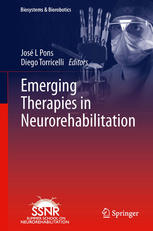

Most ebook files are in PDF format, so you can easily read them using various software such as Foxit Reader or directly on the Google Chrome browser.
Some ebook files are released by publishers in other formats such as .awz, .mobi, .epub, .fb2, etc. You may need to install specific software to read these formats on mobile/PC, such as Calibre.
Please read the tutorial at this link: https://ebookbell.com/faq
We offer FREE conversion to the popular formats you request; however, this may take some time. Therefore, right after payment, please email us, and we will try to provide the service as quickly as possible.
For some exceptional file formats or broken links (if any), please refrain from opening any disputes. Instead, email us first, and we will try to assist within a maximum of 6 hours.
EbookBell Team

4.3
68 reviewsThis book reports on the latest technological and clinical advances in the field of neurorehabilitation. It is, however, much more than a conventional survey of the state-of-the-art in neurorehabilitation technologies and therapies. It was formed on the basis of a week of lively discussions between curious PhD students and leading research experts during the summer school on neurorehabilitation (SSNR2012), September 16-21 in Nuévalos, Zaragoza (Spain). Its unconventional format makes it a perfect guide for all PhD students, researchers and professionals interested in gaining a multidisciplinary perspective on current and future neurorehabilitation scenarios. The book covers various aspects of neurorehabilitation research and practice, organized into different parts. The first part discusses a selection of common impairments affecting brain function, such as stroke, cerebral palsy and Parkinson’s disease; the second deals with both spinal cord and brain plasticity. The third part covers the most recent rehabilitation and diagnostics technologies, including robotics, neuroprostheses, brain-machine interfaces and electromyography systems. Practical examples and case studies related to the application of some of the latest techniques in realistic clinical scenarios are covered in the fourth part.